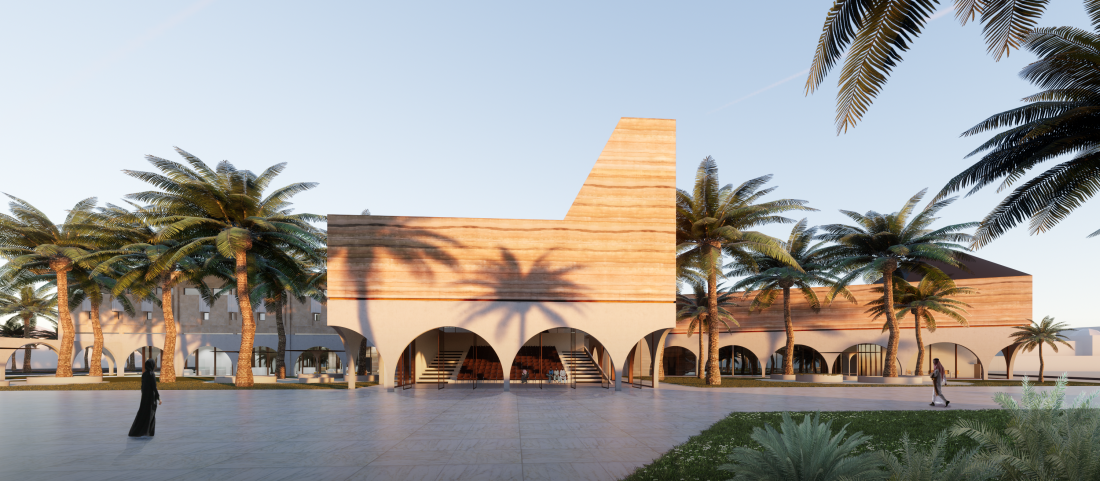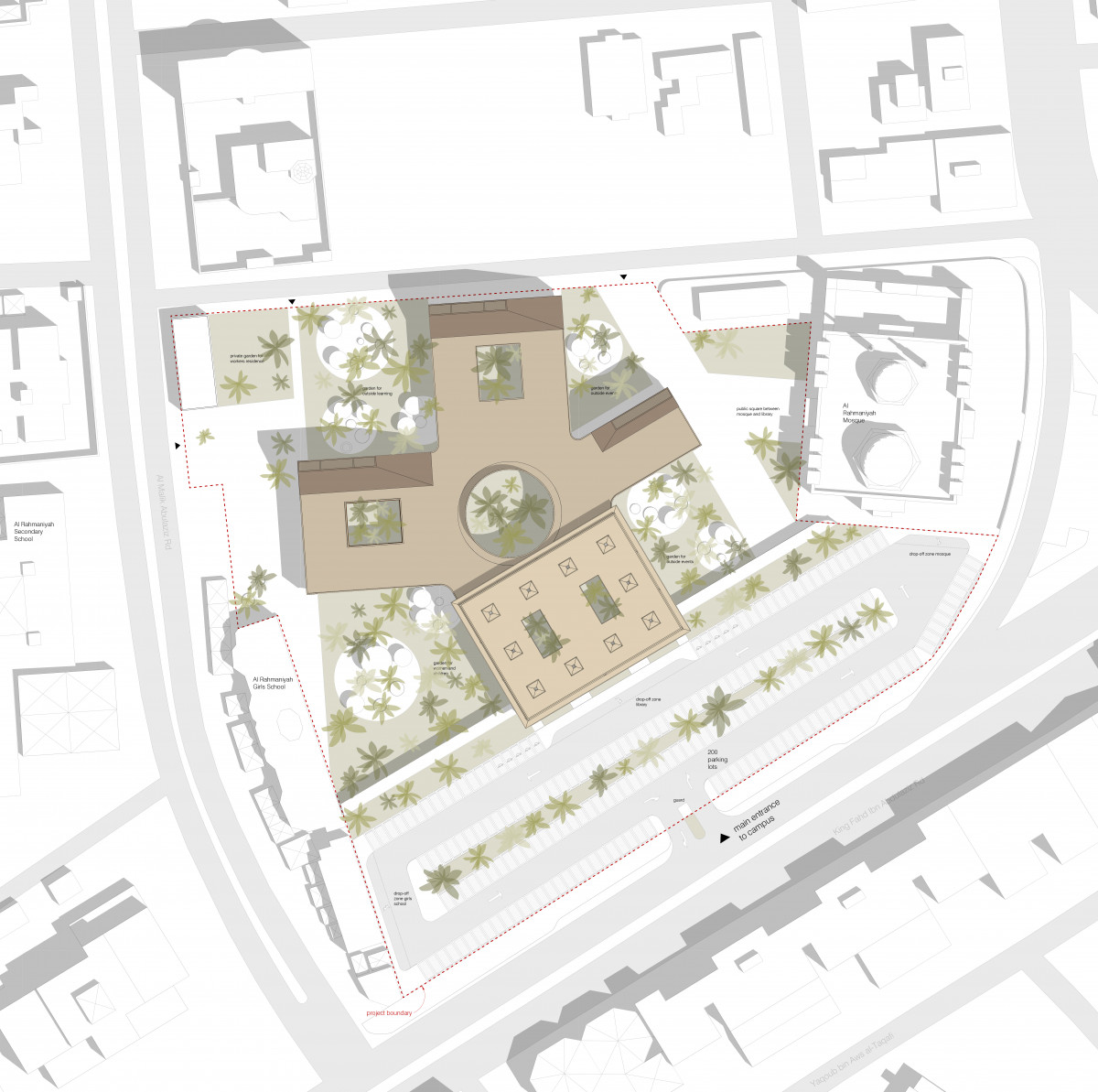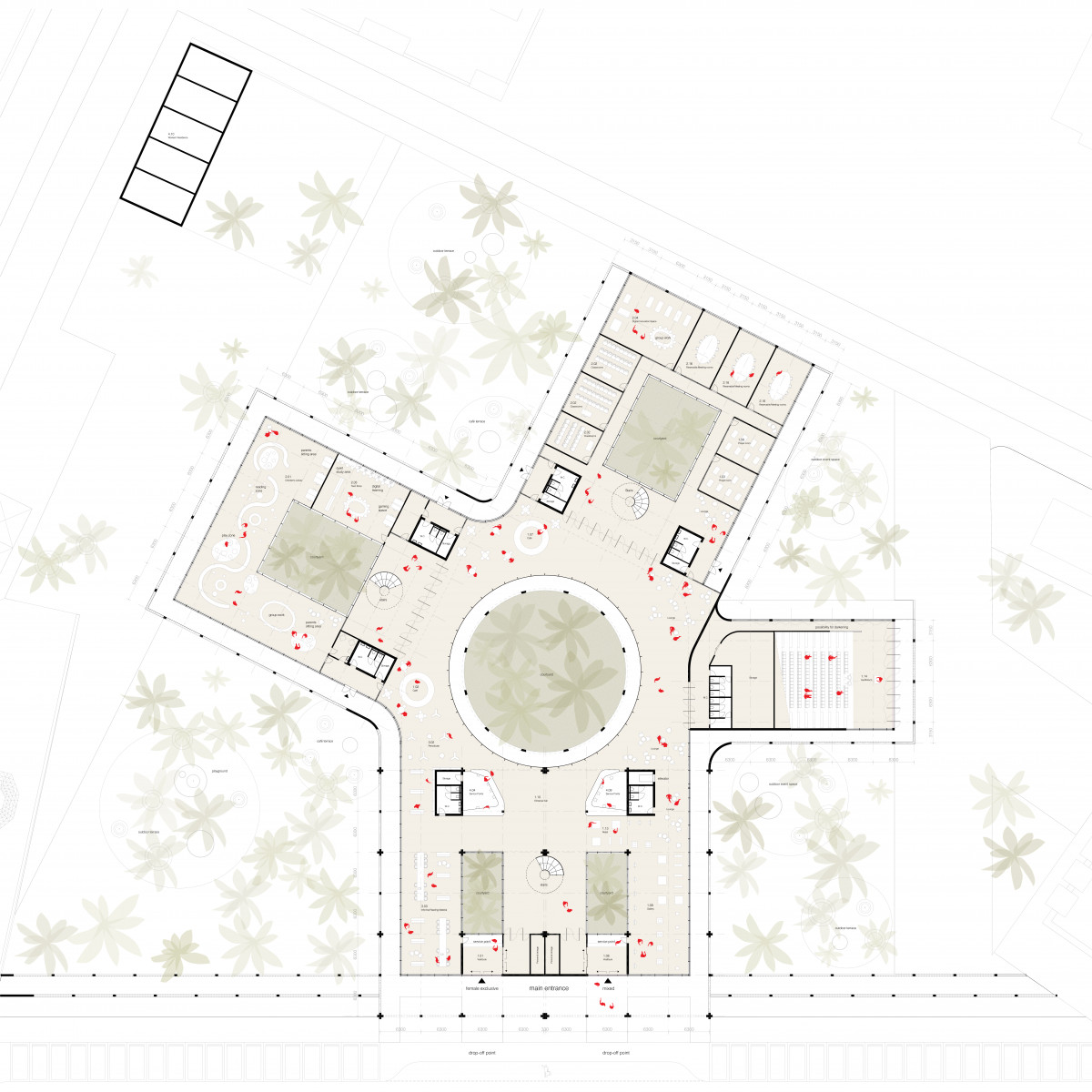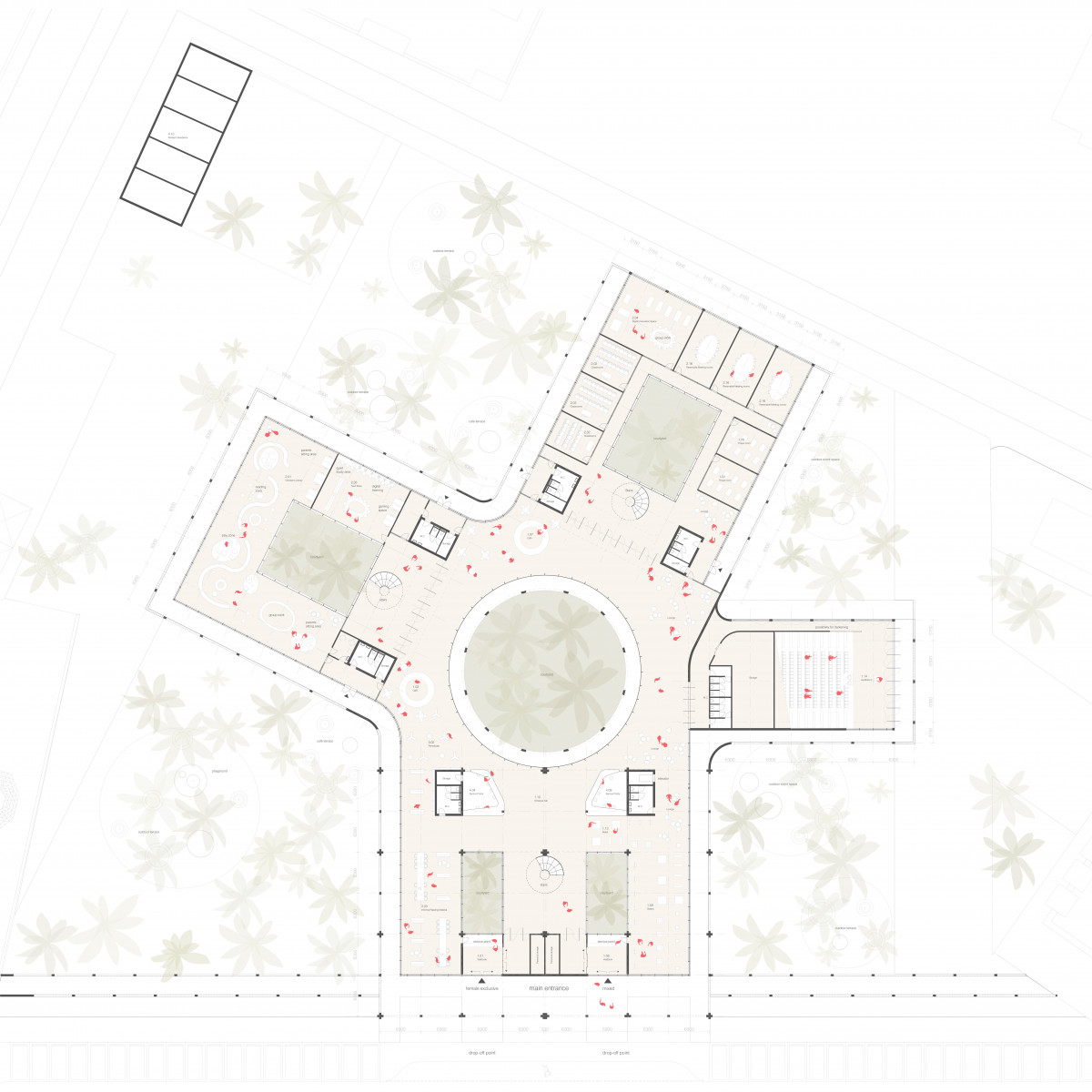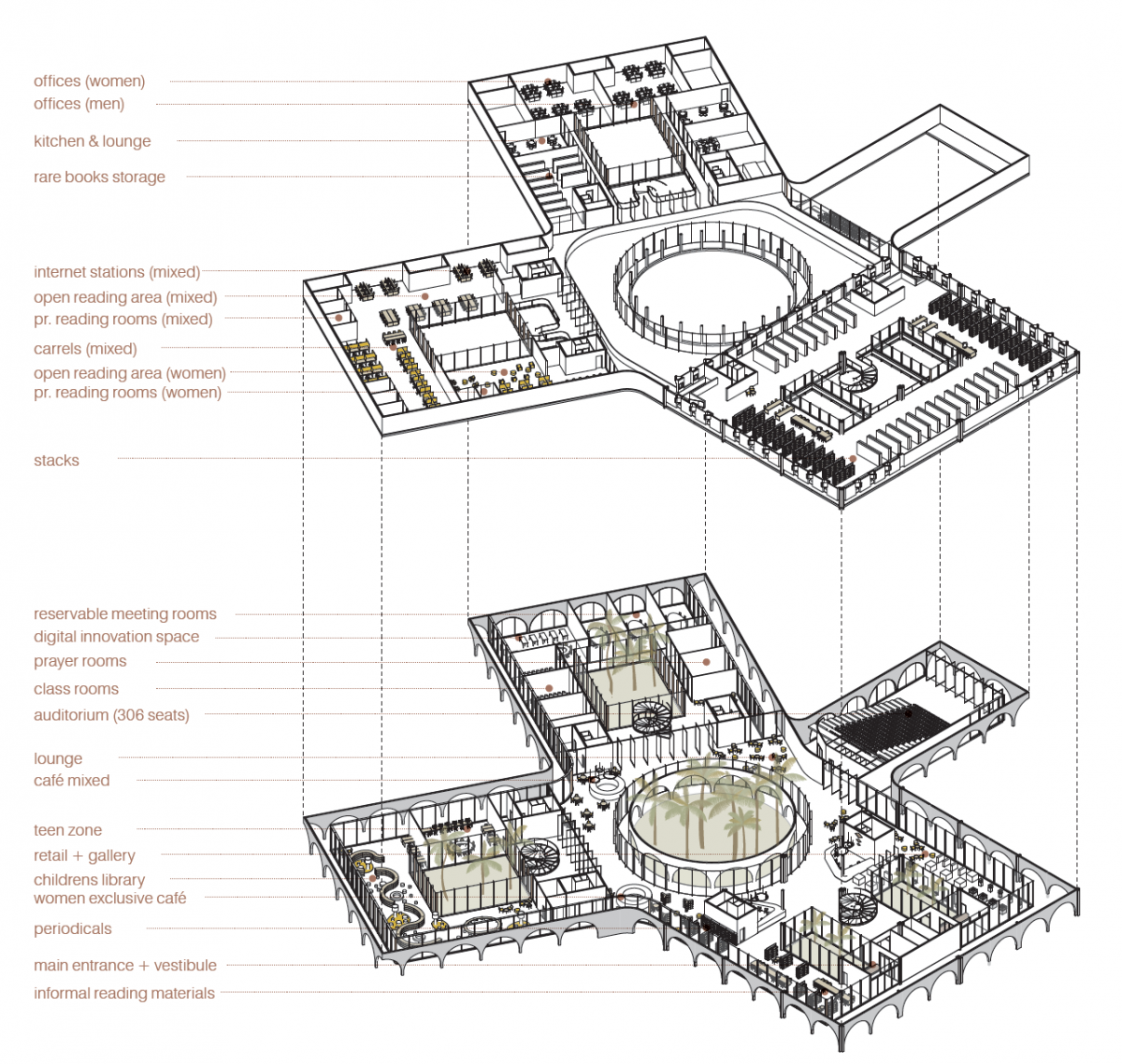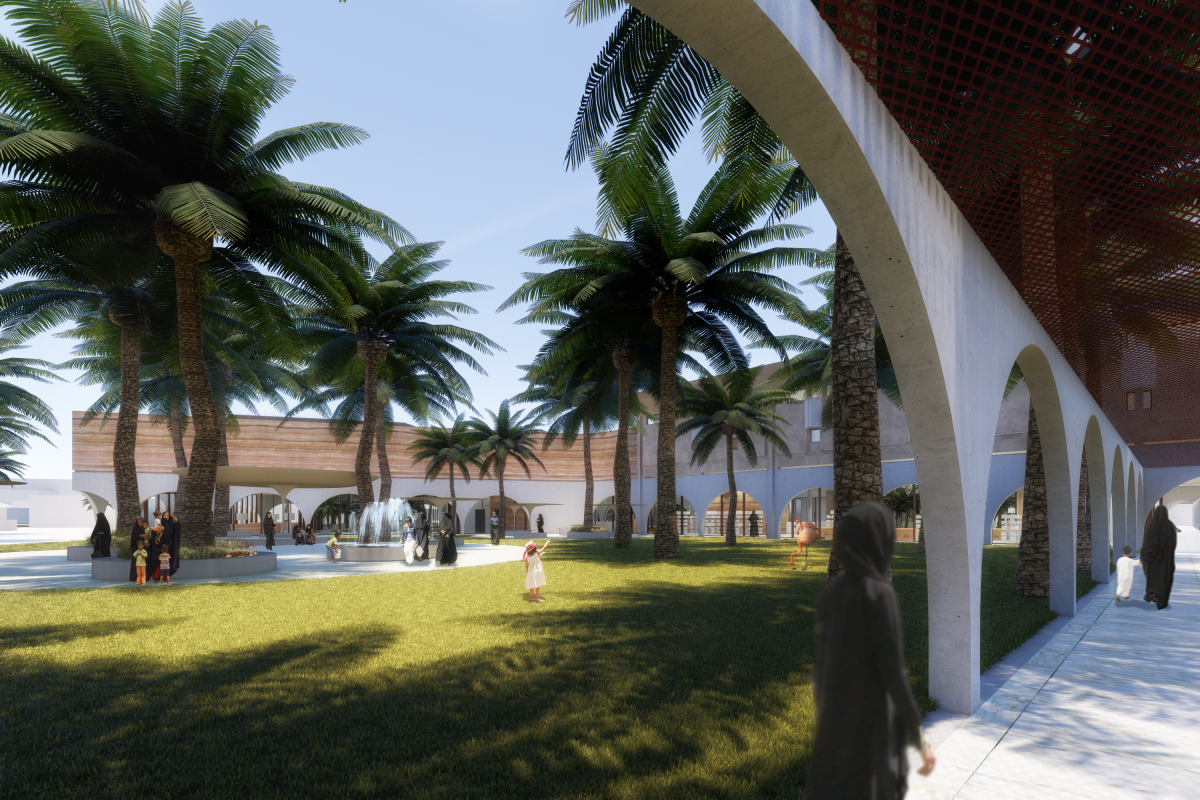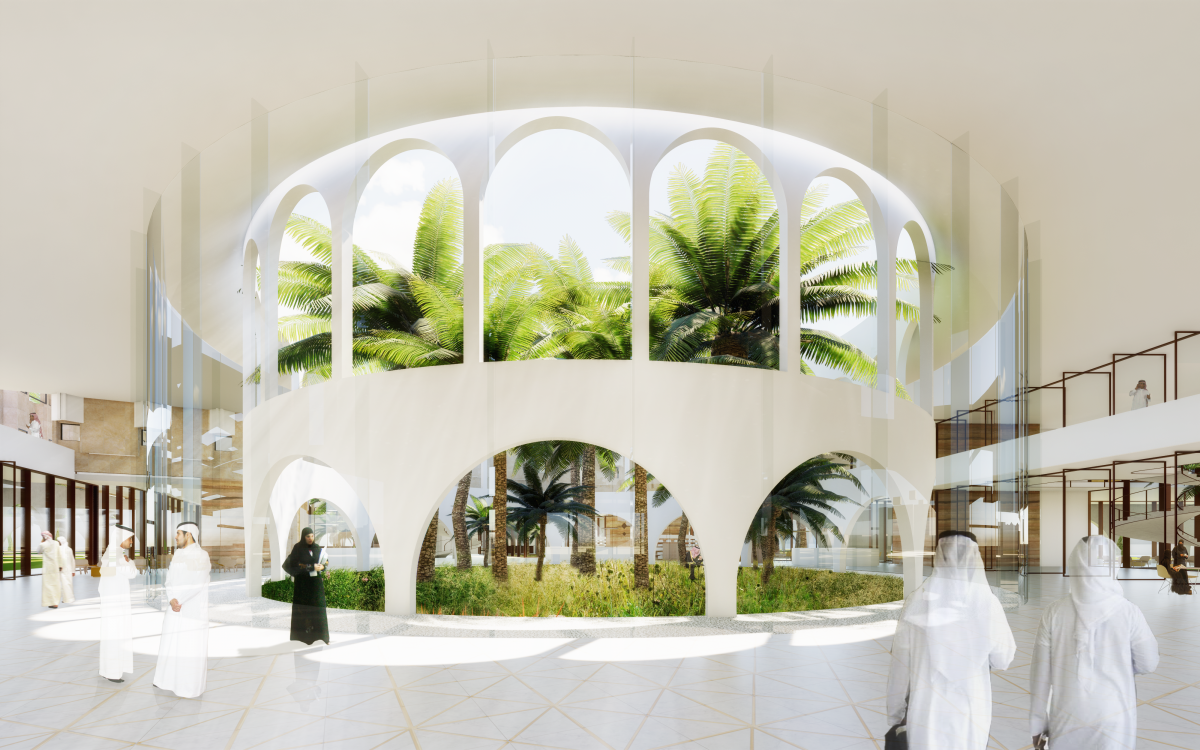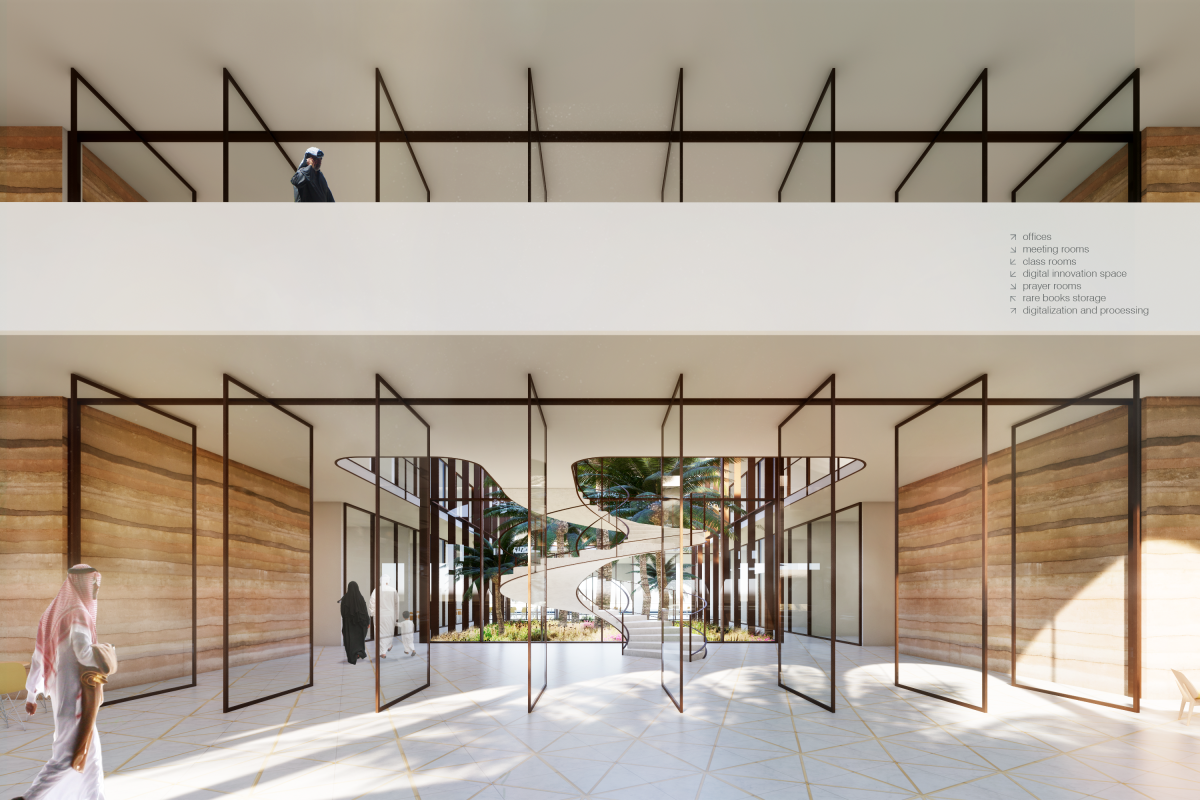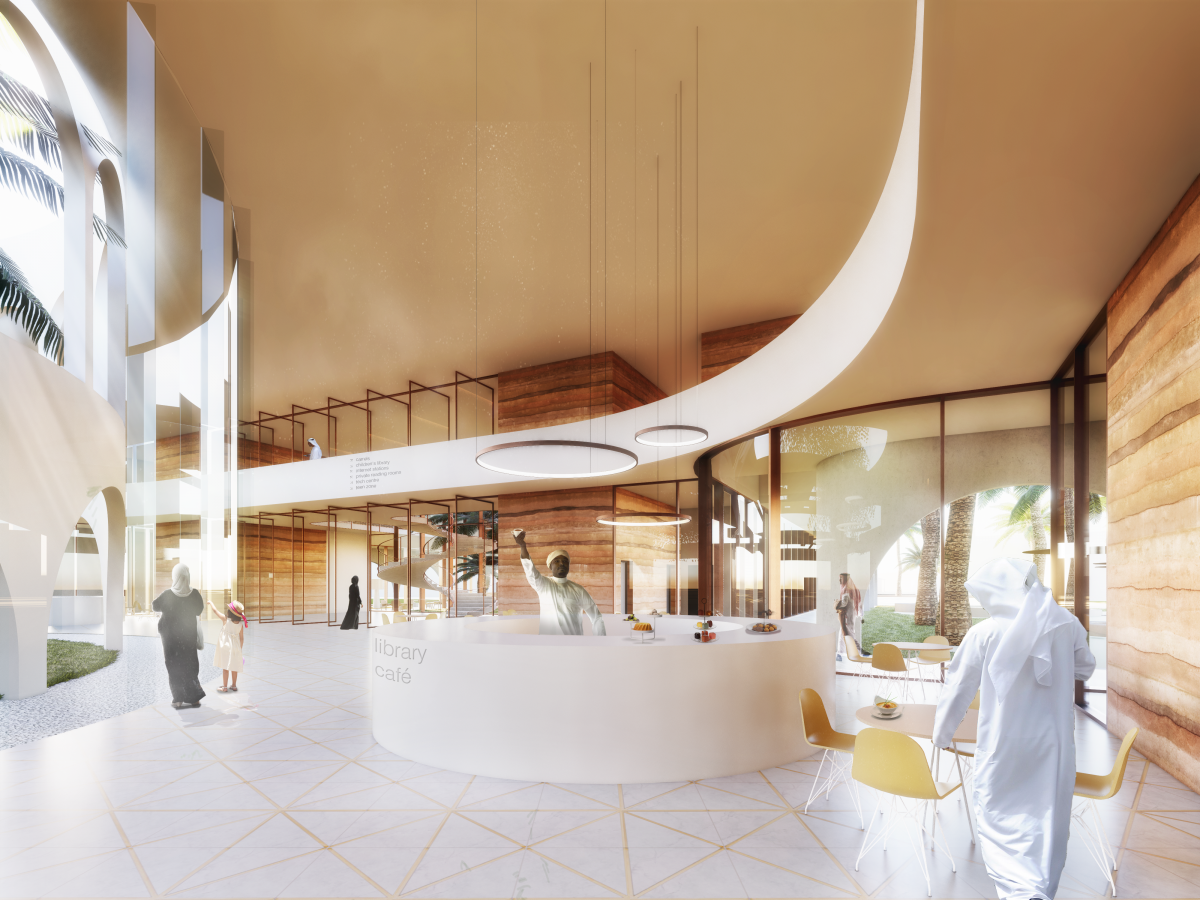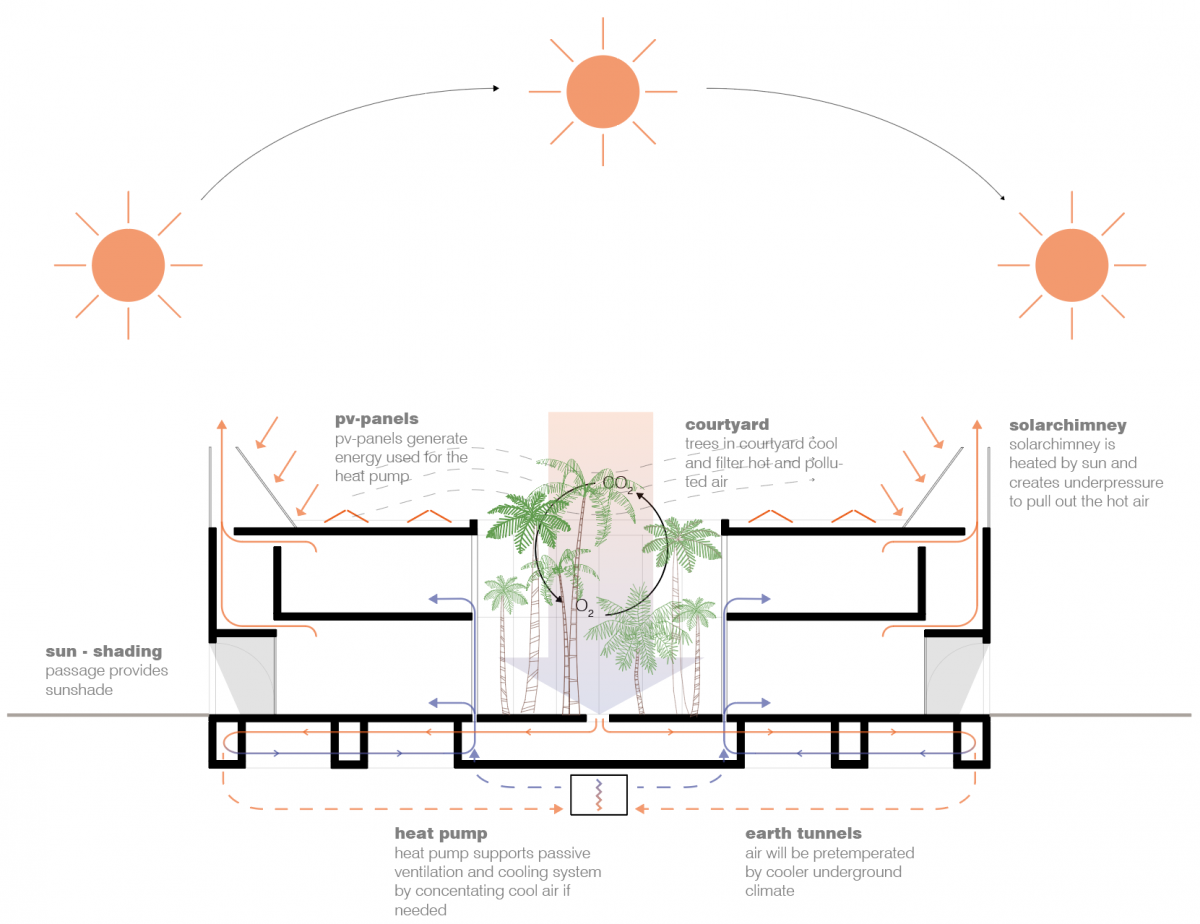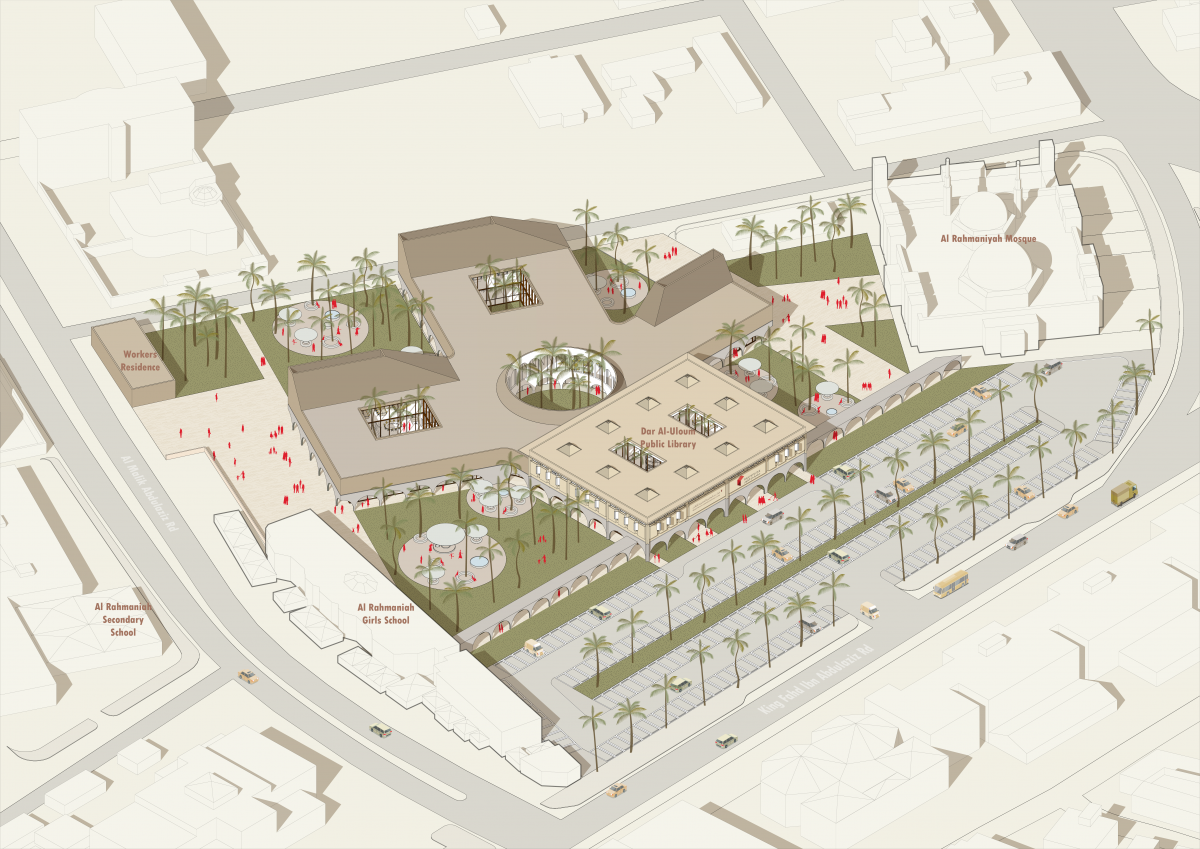Our vision for the extension of the Dar Al-Uloum is to create a state-of-the-art library that is also a social node for the city and region. The new design, respond to the urban fabric, generates comfortable green areas, and responds with respect to the Al Rahmaniyah Mosque and the Al Rahmaniah school.
To avoid unnecessary costs and the existence of huge unused spaces unfit to the local climate, the 9000 m2 parking area is placed along the King Fahd Ibn Abdulaziz Rd. This makes all the main buildings of the campus easily accessible and generates a well-needed buffer zone between the heavy traffic and the campus.
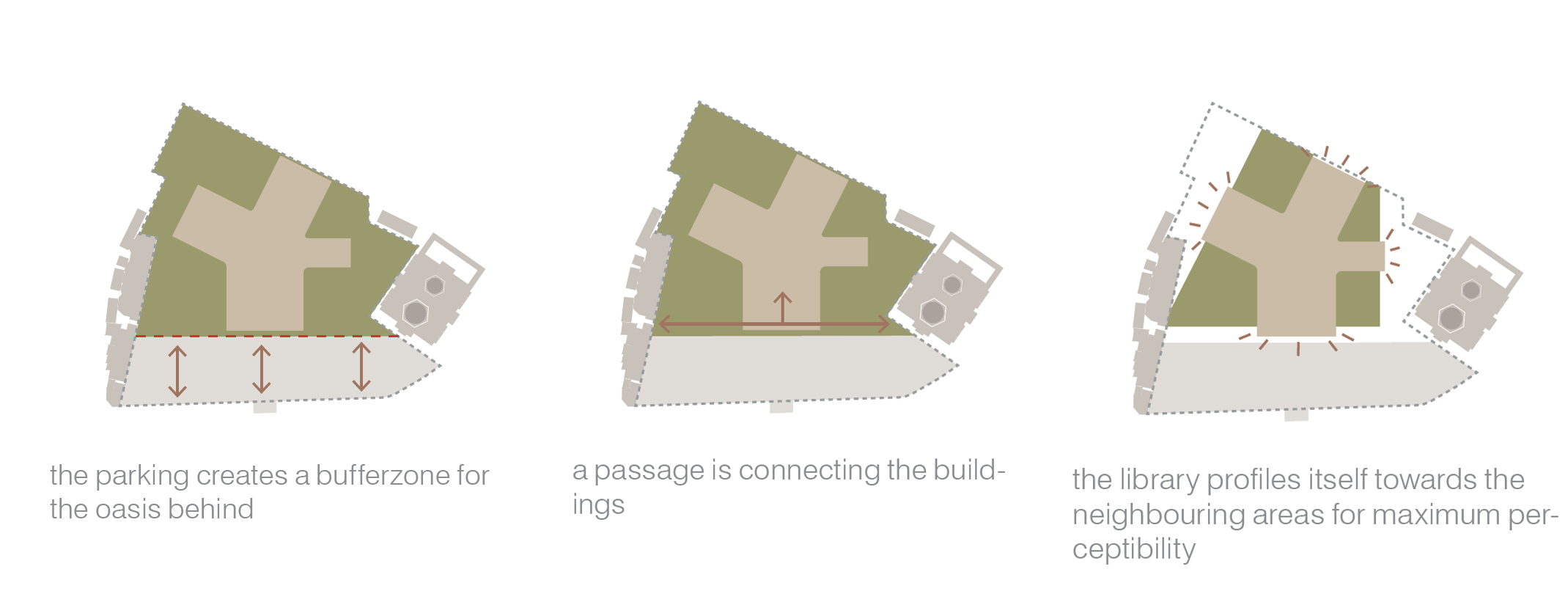
Just like a root, the existing Dar Al-Uloum building forms a point of departure from which the new extension spreads into the park, creating different smaller gardens more suited to the local climate and need of privacy. A transparent plinth of glass is formed all around the library, connecting old and new, outside and inside, and allowing views in all directions. The openness of the ground floor makes the ground level more suited for busy and public functions, while calmer and more private activities are taking place on the first floor.
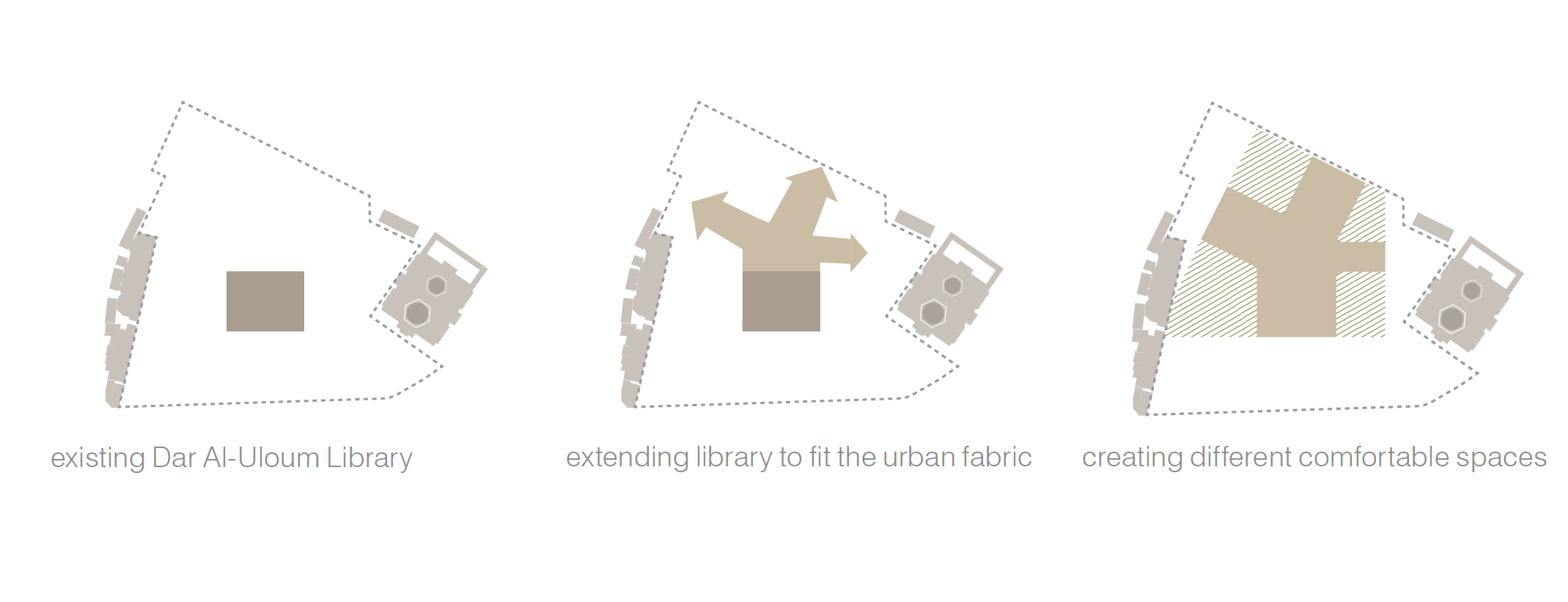 This configuration of wings around a core not only allows a strong distinction in program, clear orientation, and short transit ways; it also enables each wing to be used independently when necessary. In combination with the long-span open spaces, and the autonomous courtyards, this offers a lot of flexibility in time and use, as well as for future changes.
This configuration of wings around a core not only allows a strong distinction in program, clear orientation, and short transit ways; it also enables each wing to be used independently when necessary. In combination with the long-span open spaces, and the autonomous courtyards, this offers a lot of flexibility in time and use, as well as for future changes.
An essential aspect of the design is the implementation and combination of traditional methods of building and passive climate control. Courtyards, solar chimneys, and earth tunnels work together and are assisted by a mechanical system, powered by solar panels, when necessary. The façade consists of an elegant play between white painted arches and rammed-earth sculptural masses that lay on top of it. Not only is rammed-earth it a highly sustainable material, it also beautifully fits with the colors of the existing buildings and anchors the library in its natural and admirable landscape: the desert.
As a result, a holistic campus is formed where modern ways and traditions meet, where nature and culture are connected, and where locals and outsiders are invited to pray, learn, discover, rest, contemplate, and meet each other.

